北斎「冨嶽三十六景」Digital Remix
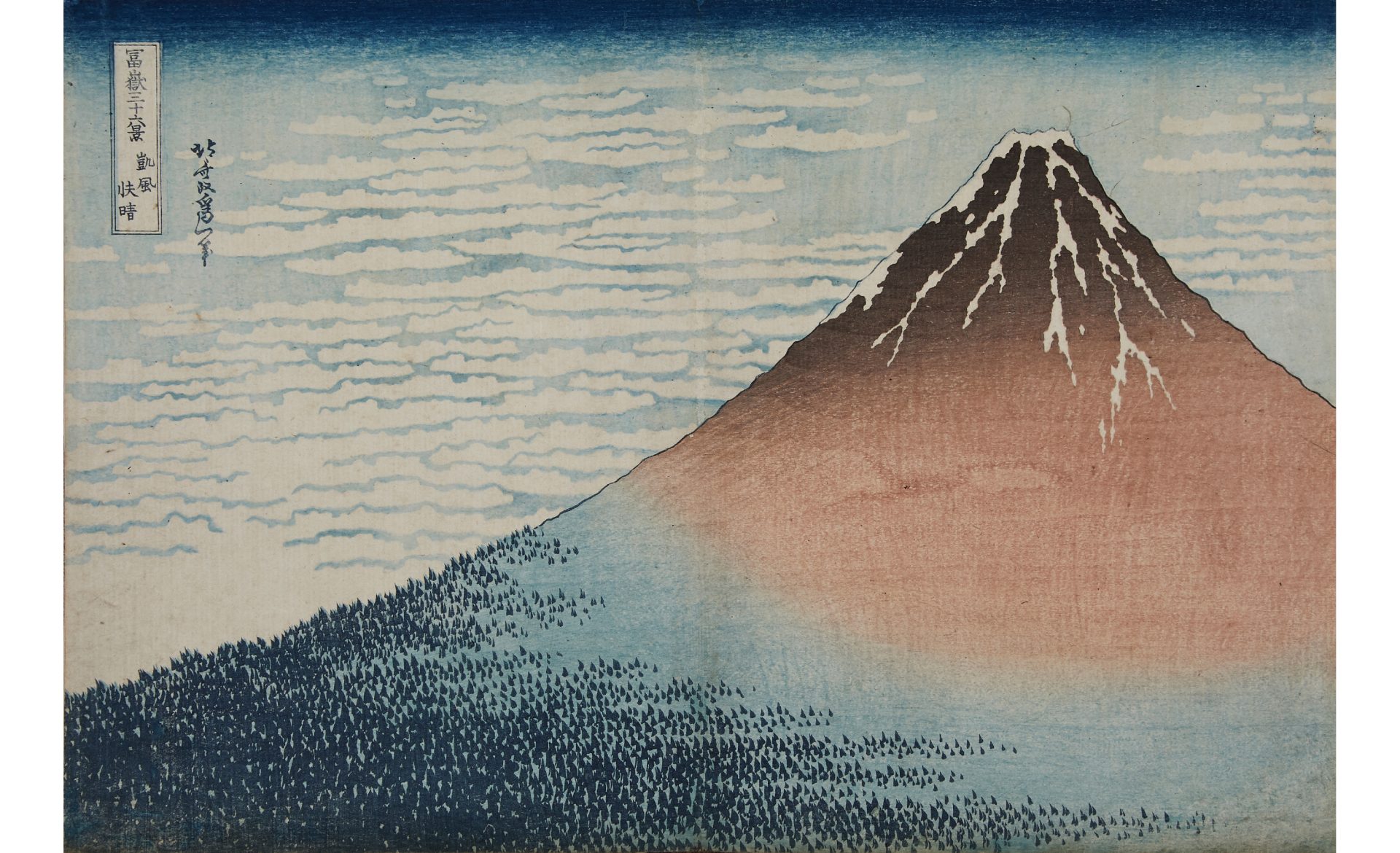
葛飾北斎の「冨嶽三十六景」は、富士の威容を示すほか、富士周辺のさまざまな場所で、生き生きと働く庶民の姿を描いた風景版画シリーズの金字塔です。
その独創的な構図は、クロード・モネやポール・セザンヌの作品にインスピレーションをもたらすなど、世界的な影響の大きさが知られています。
特に「神奈川沖波裏」は「the Great Wave」として欧米で知られ、フランスの作曲家クロード・ドビュッシーが作曲した管弦楽曲『海』初版の表紙デザインには、波の部分が用いられています。
本展では、「神奈川沖波裏」や「赤富士」として知られる「凱風快晴」を高精細デジタル画像として撮影し、当館スタッフの技術により、オリジナル・フィルム・プロジェクションとしてリミックス(再構成)します。
その他、作品が描かれた地点の現在の風景を撮影・展示し、再構成による新たな魅力を発信します。
刊行から190年を経過してもなお色褪せない「富嶽三十六景」の魅力を、デジタル・リミックスによる新感覚でお楽しみください。
みどころ
①全46図一挙展観!
「冨嶽三十六景」は、当初刊行された三十六図が好評を博したことから、10図を追加して全46図が制作されました。本展では、全46図を一挙展観します。
②版画のわざ×デジタル 摺りのわざを高精細映像でたしかめる。
1億5千万画素の高精細画像として撮影したデジタル素材を活用し、「冨嶽三十六景」を大画面プロジェクションとしてリミックスします。肉眼では不可能な拡大により、紙の質感や摺りの技まで没入感のある映像空間でお楽しみください。
③風景画×デジタル 今も面影をのこす風景をデジタルで比べる。
江戸時代当時に作品が描かれた場所を独自に取材し、映像や画像で比較展示します。なお面影をのこす町並みや、変化した風景などリミックスされたオリジナルショットをお楽しみください。
冨嶽三十六景について
葛飾北斎の「冨嶽三十六景」は、江戸後期の旅や行楽への関心の高まりや、当時の富士信仰の盛行を背景に、天保2年(1831)頃より西村永寿堂から刊行されたシリーズものです。これらは、まとめて一時に刊行されたのではなく、数年にわたり断続的に制作されと考えられ、最初に出版された36図に、好評につき追加出版された10図を加えた全46図からなります。 三角形や円などの幾何学形を用いた斬新な構図や遠近法によって、富士を、場所、時間、季節を変化させて描き分けています。また、西洋から輸入された「ベロ藍」と呼ばれる化学顔料の鮮やかな発色を効果的にいかしています。 北斎はそれまでにも東海道絵や名所絵など、風景を扱った作品を幾つも手がけていましたが、「冨嶽三十六景」は、風景そのものを主人公とし、浮世絵風景版画というジャンルを確立させた記念碑的な作品です。
葛飾北斎
美術館宝暦10年(1760)〜嘉永2年(1849)北斎は、宝暦10年(1760)、江戸本所割下水に生まれました。若くして木版彫刻の職を得た後、絵師を志し、安永7年(1778)に勝川春章(1726〜1792)に入門しました。春章の没後は勝川派を離れ、狩野派、土佐派、琳派、洋風画など諸派の画法を学び続けました。北斎、戴斗、為一、卍など、生涯に三十数回の改名を繰り返しつつ、その度に画風を変化させています。90年の生涯で、読本挿絵、肉筆画、『北斎漫画』に代表される絵手本、「冨嶽三十六景」をはじめとする風景版画等数多くの作品を制作しました。
主な展示作品
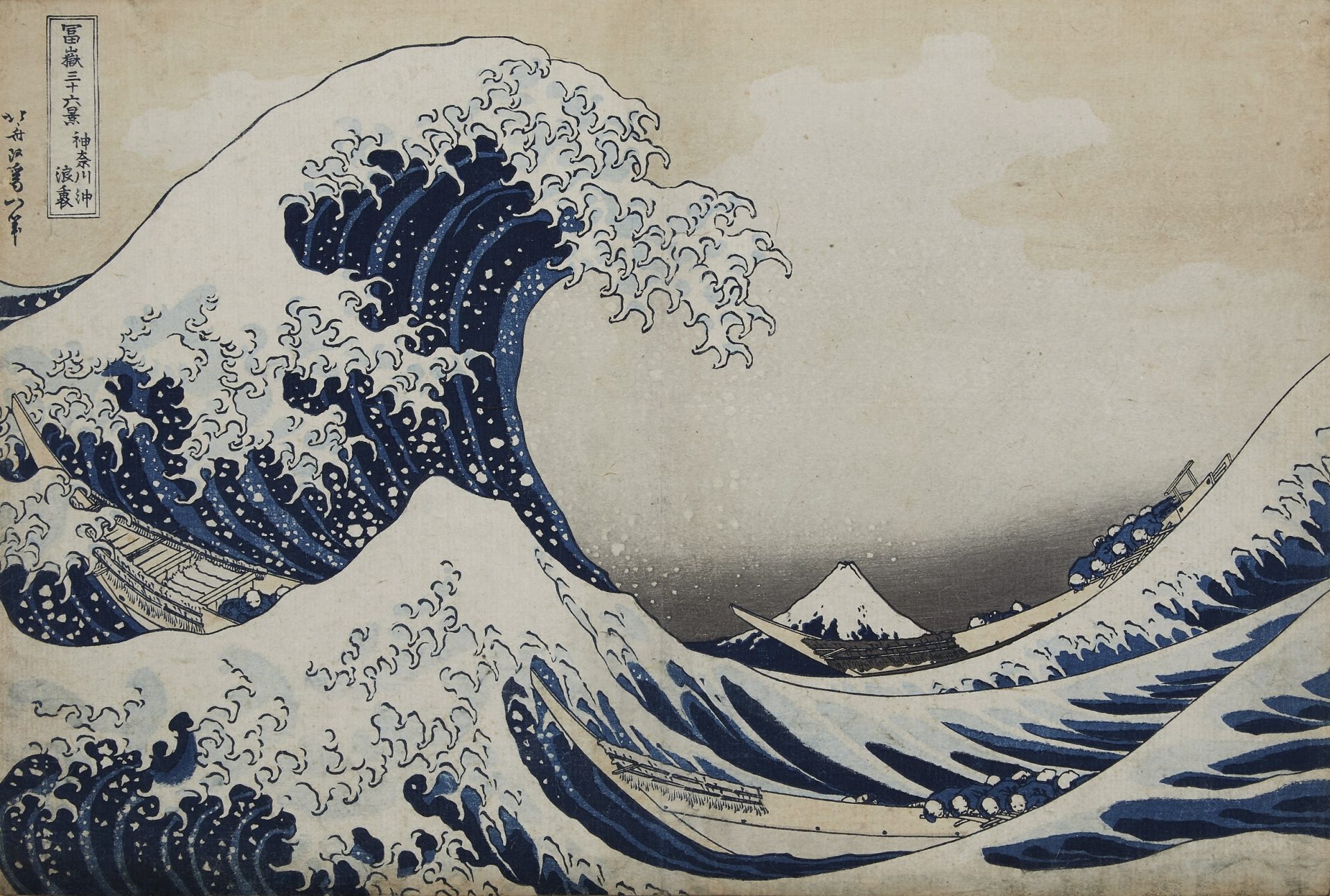
神奈川沖浪裏
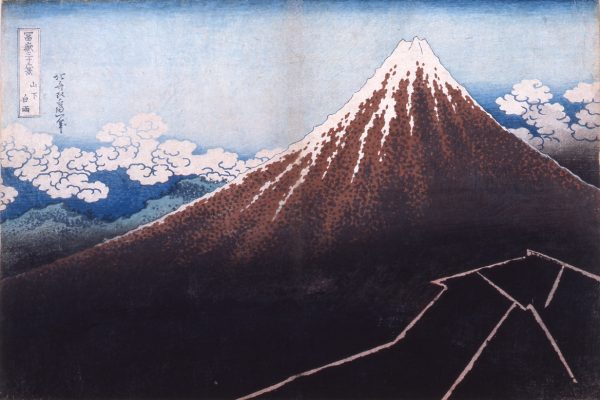
山下白雨
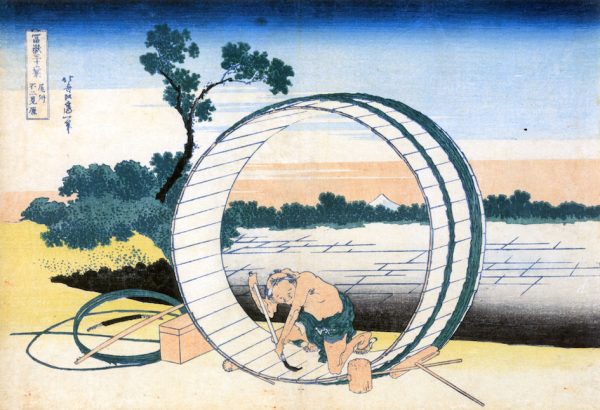
尾州不二見原
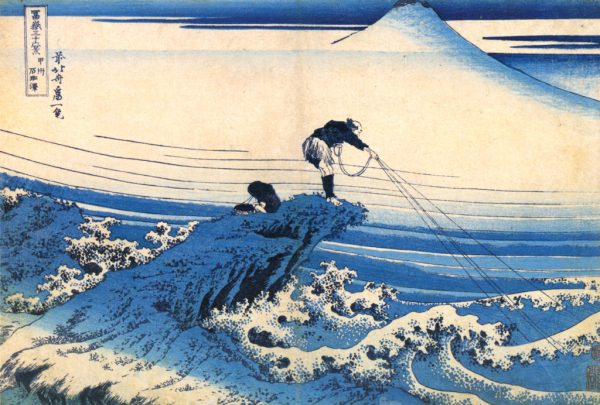
甲州石班澤